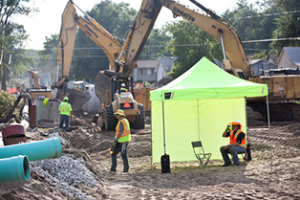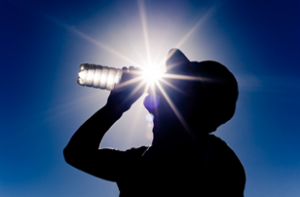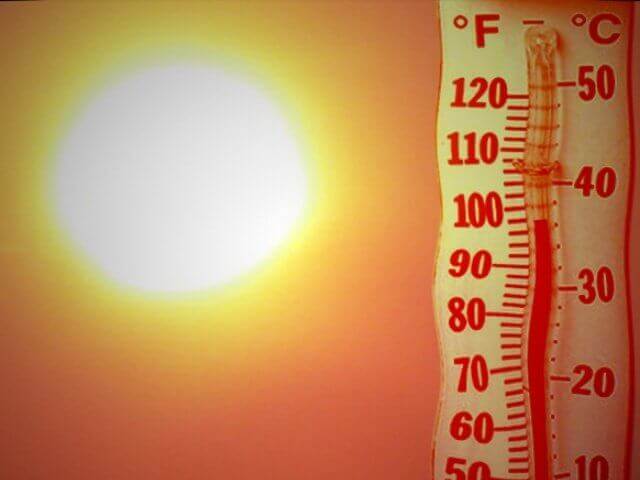Working safely in hot conditions
 The Occupational Safety and Health Act 1984 requires employers to provide and maintain, so far as is reasonably practicable, a working environment in which workers are not exposed to hazards. This applies to any risk to safety and health, including illness from working in heat.
The Occupational Safety and Health Act 1984 requires employers to provide and maintain, so far as is reasonably practicable, a working environment in which workers are not exposed to hazards. This applies to any risk to safety and health, including illness from working in heat.
What is heat Stress?
Heat stress is the total heat burden to which the body is subjected by both external and internal factors. Heat stress causes increased blood flow to the skin, which allows release of heat. Blood is diverted to the muscles if physical work is being performed, resulting in a lower release of heat through the skin.
instagram ucuz takipçiThe body must balance the heat transferred into the body, heat generated in the body and heat coming out of the body.
Heat Illness
If the body can’t balance heat inputs, heat stress may lead to heat illness (or heat strain), a physical response designed to reduce body temperature.
Types of heat illness include:
- discomfort - flushed skin, increased sweating, heat rashes (prickly heat);
- mild heat illness - feeling tired, weak or dizzy, cramps, reduced work capacity, reduced attention span, irritability;
- heat exhaustion - fainting, headache, low blood pressure, nausea, clammy, pale or flushed skin, normal to high body temperature (up to 39C);
- heat stroke - irritability, confusion, speech problems, hot dry skin, convulsions, unconsciousness, body temperature above 40C, cardiac arrest - potentially fatal, a life threatening condition that requires immediate first aid and medical attention.
Identifying risk factors
The key risk factors to take into account are:
- air temperature;
- humidity (high humidity limits the evaporation of sweat – a key cooling mechanism for the body);
- radiant heat (from the sun or other sources such as furnaces, ovens and hot vessels);
- air movement or wind speed;
- workload (intensity and duration of the work);
- physical fitness of the worker, including acclimatisation and any pre-existing conditions such as obesity, heart/circulatory diseases, skin diseases or use of certain medicines that can effect the body’s ability to manage heat (eg diuretics, antidepressants and anticholinergics); and
- clothing (including protective clothing that may restrict air flow across the skin and hinder evaporation of sweat).
Reducing the risk of heat stress
 Engineering controls are an effective way of reducing heat stress and preventing or minimising occurrence of heat illness. Examples include: increasing air movement using fans; installing shade cloth to reduce radiant heat from the sun; installing air conditioners or coolers to reduce air temperature;
Engineering controls are an effective way of reducing heat stress and preventing or minimising occurrence of heat illness. Examples include: increasing air movement using fans; installing shade cloth to reduce radiant heat from the sun; installing air conditioners or coolers to reduce air temperature;
Organisation of work can also reduce heat stress by giving attention to the way work is organised. Examples include: rescheduling work so the hot tasks are performed during the cooler part of the day or in cooler times of the year; reducing the time an individual spends doing the hot tasks; providing additional rest breaks in cool, shaded areas; and
Providing training and information will enable workers to: identify hazards associated with heat stress; recognise symptoms of heat stress and heat illness; identify appropriate first aid procedures; use appropriate protective clothing and equipment/ etc.
Toolbox meetings and pre-start meetings present opportunities to reinforce the actions needed to avoid heat illness.
Providing personal protective clothing (PPE) such as reflective aprons and face shields can reduce exposure to radiant heat. Ice vests and liquid and air circulating systems can be worn under PPE where appropriate. Outdoor workers should be provided with protection against ultraviolet exposure, such as a wide brim hat, loose fitting, long sleeved collared shirt and long pants, sunglasses and sunscreen.
Preventing heat illness
- Replace lost fluids (drink more water). Drinks of approximately 250ml every 15 to 20 minutes should be encouraged during hot work conditions. İzmir Escort
- Minimise caffeine, carbonated drinks, alcohol and tobacco use;
- Have rest breaks in a cool place;
- Maintain a healthy lifestyle (healthy diet and regular exercise);
- Wear cool clothing, a wide brimmed hat and use sunscreen; and
- Take a break and tell your boss if feeling tired, dizzy or weak or you're having trouble concentrating.

Font: https://www.commerce.wa.gov.au/worksafe/working-safely-hot-conditions


